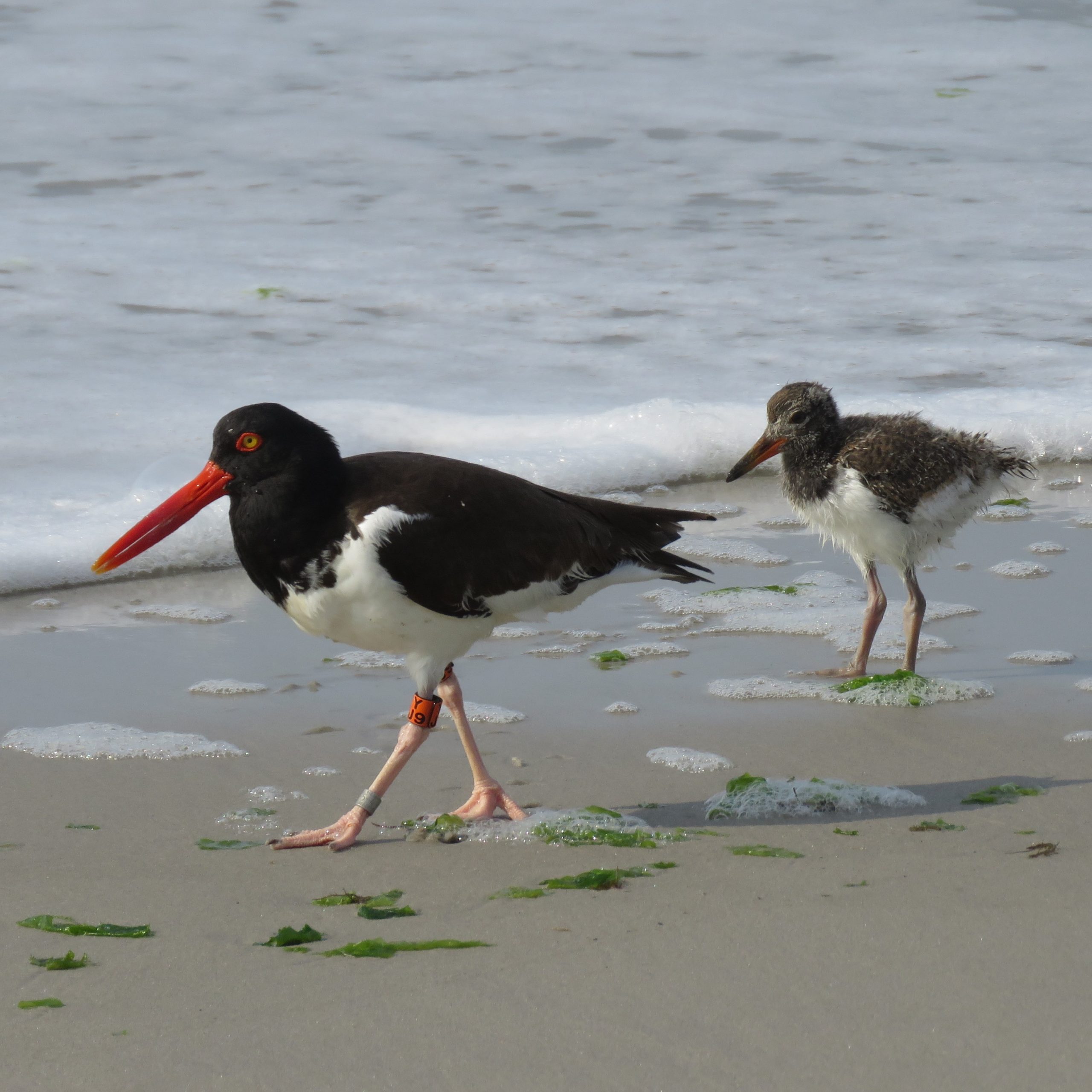On May 19, Audubon New York announced that the inaugural “Share the Shore” award recipient was the Town of Hempstead. The Town garnered this award for its five-decade history of conserving beach habitat and nesting birds.
The town began a dune restoration program in 1973. In the ’70’s the town also began participating in DEC waterbird surveys. When Piping Plovers were listed as Federally Threatened in the 1980s, the town began monitoring nesting pairs.
The 1990s were a decade of rapid expansion of programs. The town began protecting threatened birds by placing exclosures around Piping Plover nests and using string fencing to protect Tern nesting areas.
They also added winter beach management to prevent sand erosion. The town coordinated with US Fish and Wildlife to develop management techniques to allow for 4th of July fireworks display and protect nesting birds.
In 1996 GPS units were used to map nesting locations, creating long-term datasets, and the town assisted New York State parks at Jones Beach to map shorebird nesting locations. In 1997 Piping Plover productivity data was captured and the first pair of American Oystercatchers nested on the ocean beach.
The town began a partnership with the South Shore Audubon Society, which provided volunteer monitors.
In 1999 Audubon New York recognized Town of Hempstead beaches including Point Lookout, Lido Beach, and Sands Beach as an Important Bird Area, critical to nesting Piping Plovers, Least Terns, Black Skimmers, and American Oystercatchers and a large variety of other shorebirds and waterfowl.
In the 2000s the town began adding full-time and seasonal staff to support a robust 7-day a week monitoring program. This helped to capture better monitoring data, as well as prevented off-hour disturbances such as people inside the string fencing and unleashed dogs.
In 2002 the Town reshaped its beach management program to meet the needs of beach-nesting birds. These efforts were rewarded in 2005 with a high count of fledged Piping Plovers, 33 chicks from 17 pairs.
In 2011 and 2012 the Island sustained the one-two punch of Hurricane Irene and Superstorm Sandy. While this was devastating to south shore communities it also brought home the importance of barrier beaches as natural protection and local residents began volunteering for programs including dune grass plantings and beach cleanups.
In 2012 Black Skimmer banding began with metal federal bird bands. By 2015, close to 1000 birds were banded and monitored. The south shore has the largest colony of Black Skimmers in New York. GPS transmitters were deployed on 29 Black Skimmers between 2018 and 2019.
This study allowed better understanding of Skimmer foraging locations on a more local scale. In 2014 the Town deployed infrared cameras to identify predators at Piping Plover nests. That system was upgraded in 2016 with solar panels.
In 2014 the town partnered with Audubon NY and began an art contest with school children to bring colorful and informative signs to the nesting sites. This created better engagement with the public, and a well-educated generation of young bird stewards.
In addition, Audubon staff sponsored table sessions at Town beaches to help promote stewardship, asking beachgoers to learn about shorebirds and pledge to “Be a Good Egg.” Since 2014, thousands of signatures have been collected at town sites.
In addition, the Town started working with Audubon to focus more closely on the quickly increasing American Oystercatcher nesting pairs on their beaches. Audubon provided trained summer staff to supplement the town’s efforts to collect nest data, monitor for renests, and chick productivity.
In 2020, despite COVID-19, the Town of Hempstead remained dedicated to the protection of the ecosystem. The result was the largest number of Piping Plover pairs and Black Skimmer adults at the colony in over a decade.
This sustained and dedicated effort was recognized by Audubon New York as worthy of the first Share the Shore Award. “Share the Shore” and “Be a Good Egg” are Audubon’s efforts to protect threatened shorebirds that depend on our beaches to nest successfully.
Every May–August, birds like the Piping Plover, Least Tern, and American Oystercatcher hatch tiny chicks on the shores of the Long Island Sound and Atlantic Coast.
The program unites scientists with community members and local leaders who love their shorelines and are dedicated to improving them for birds and people. Audubon’s newest science shows that the population of vulnerable species grows 2 to 34 times faster at stewardship sites, compared to birds in protected areas without stewardship.
Thanks to their commitment to protecting and managing their beaches, the Town of Hempstead has helped turn the stretch of shoreline from Point Lookout to Lido Beach into a haven for beachgoers and birds.
If you go: Nickerson Beach is open to all Nassau County residents, parking fee collection starts at 9:30 a.m. Don’t go too close to the Tern colony- they will dive bomb you!
Learn more: https://ny.audubon.org/conservation/audubon-celebrates-share-shore-award-winners
If you want to encourage your town to participate in these kinds of programs, add your name here; https://act.audubon.org/a/share-the-shore-petition
Pledge to “Be a Good Egg” https://ny.audubon.org/birds-0birdsways-help/be-good-egg



